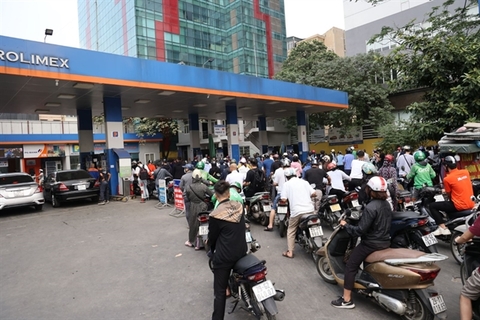1. The Politburo passed a number of decisions to spearhead the socio-economic development for six major economic hubs until 2030, with a vision to 2045, to take advantage of each region's unique characteristics and improve connectivity. In addition, the National Assembly approved five key infrastructure projects aimed at linking all regions across the country as part of an effort to bolster the country's logistics infrastructure.
2. Viet Nam's GDP growth this year reached a decade-high of 8.02 per cent, 1.7 percentage points higher than the target. Inflation was kept in check at 3.1-3.3 per cent. During 2022, the country attracted total foreign direct investment (FDI) of US$21 billion, an 8 per cent increase from 2021. Import/export turnover for the year was reported at $750 billion, a 12.8 per cent increase year-on-year. Viet Nam continued to stay among the world's top destinations for foreign investment.
3. The government released a national development strategy for 2021-30, with a vision to 2050, on October 25 to oversee socio-economic activities, national defence and security, environmental preservation and regional interconnectedness of all regions across the country. The strategy aimed to keep the country on a course of sustainable socio-economic development in the decades to come.
4. All three of the world's most recognised rating agencies, Moody's, Standard & Poor's (S&P) and Fitch Ratings, gave Viet Nam a ''positive'' rating. In early September, Moody's upgraded the country's status from Ba3 to Ba2 with a ''stable'' outlook, making Viet Nam the only country in the Asia-Pacific region to have received an upgrade from the rating agency this year.
5. The State Bank of Vietnam (SBV) raised interest rates and intervened in foreign exchange markets numerous times between September 9 and November 25, moves the played a key part in the country's economic recovery and inflation control efforts.

NAVET-ASFVAC vaccines, the first Made-in-Vietnam commercially available vaccine for the African swine fever virus, seen in a lab. VNA/VNS Photo
6. Viet Nam was the first to produce a vaccine for the African swine fever virus. The Made-in-Vietnam NAVET-ASFVAC and AVAC ASF LIVE were the first two commercially available vaccines for the disease, which according to the Ministry of Agriculture and Rural Development will be rolled out nationwide at the beginning of 2023.
7. Viet Nam's stock markets set numerous records this year. The HCM City Stock Exchange (HoSE) set a market capitalisation record of VND6,000 quadrillion in early April. During the first 11 months of the year, 2.5 million stock exchange accounts were created, the largest number since the foundation of the stock markets.
8. The corporate bond market was heavily hit after a number of high-profile cases were investigated by the police with bondholders selling in panic out of fear. On September 16, the government announced a string of measures to improve transparency and protect investors' rights and interests in an effort to stabilise the market.
9. Starting from August 1, electronic toll collection (ETC) systems were activated on all highways in the country. Since a pilot programme in 2015, the systems have been delayed many times after experiencing technical difficulties and unwillingness from operators. The automated systems were expected to improve service quality, and reduce waiting time, traffic jams, emissions and costs.

People queuing in front of a gas station in Ha Noi. VNA/VNS Photo
10. During October and November, long queues could be seen in front of gas stations across the country, especially in major cities and provinces as fuel traders voiced their grievances over rising global oil prices and management inefficiency by the Ministry of Industry and Trade and the Ministry of Finance. VNA/VNS